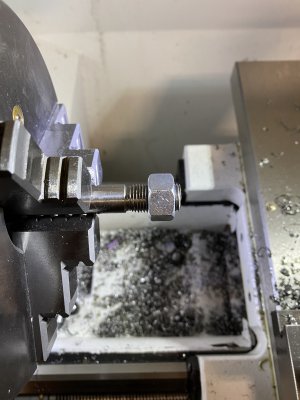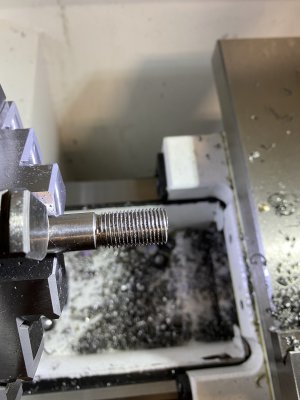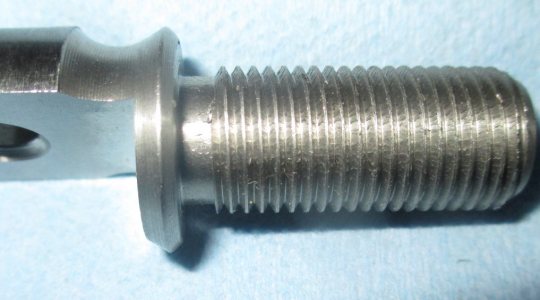I'm a little late to the party here, but I'll throw in my 2 cents anyway. I thread 100's of 304 and 303 parts every month (1/2-20), both internal and external.
Internal is all done with a spiral flute, powered metal Guhring machine tap, designed for SS, and using a 50% thread depth drill.
View attachment 365741
External threading is done with an Accusize insert holder.
https://accusizetools.com/products/...threading-inserts?_pos=3&_sid=9c18780a2&_ss=r
500 RPM, 5 passes with a finish spring pass. I use a reduced step down strategy where each pass has less depth than the previous and starts at about 0.01 DOC and finishes at about 0.002 DOC. Flood coolant.
View attachment 365737
View attachment 365738
I use these Mitsubishi MMT16IRAG60 VP10MF inserts, designed for SS
View attachment 365739
I get a little tearout on the 303 SS, but the 304 SS threads are nice and smooth. I could work with the cutting parameters to clean up the 303 threads a bit, but they meet our needs as they are.
The 304 is much harder on the tools than is 303. I can get a few hundred parts per edge in the 303, where the 304 I get a couple hundred at best.
Also I just received my new Shars threading insert holder today.
https://www.shars.com/3-4-mtvo-external-threading-grooving-tool-holder-right-hand
View attachment 365740
and these inserts
https://www.shars.com/tnmc-32nv-tin-carbide-insert
I bought this because we are changing the design of the parts and need the extra clearance. on the face.




 You are almost there.
You are almost there.